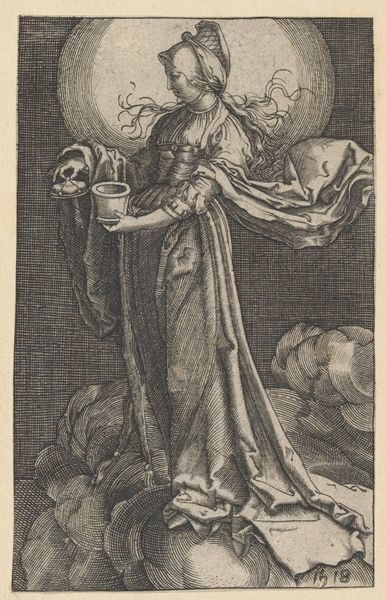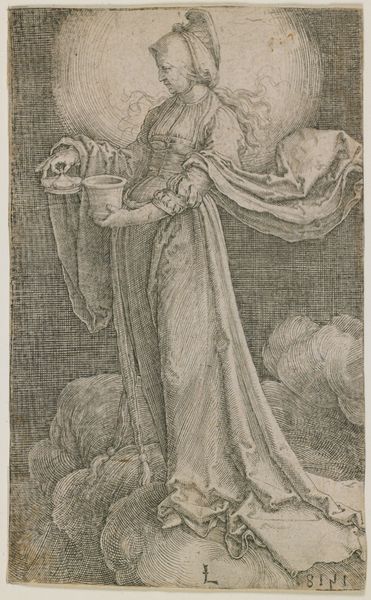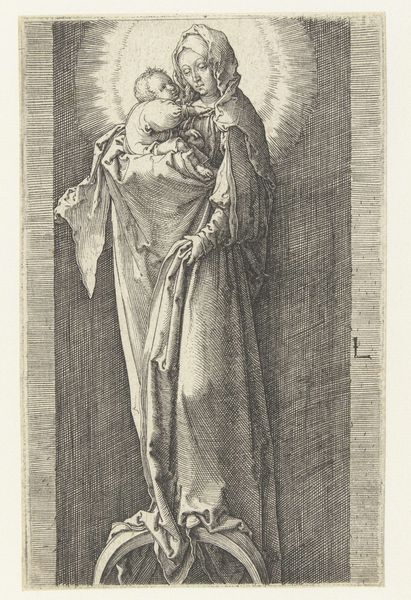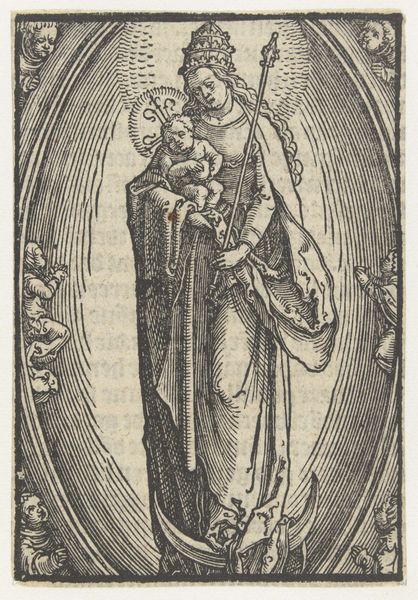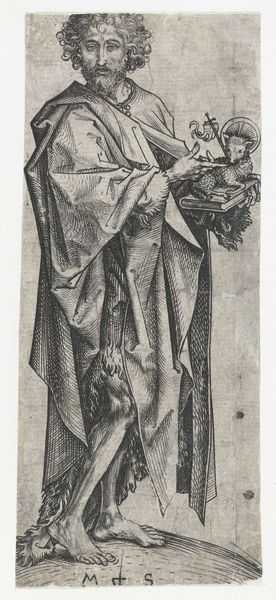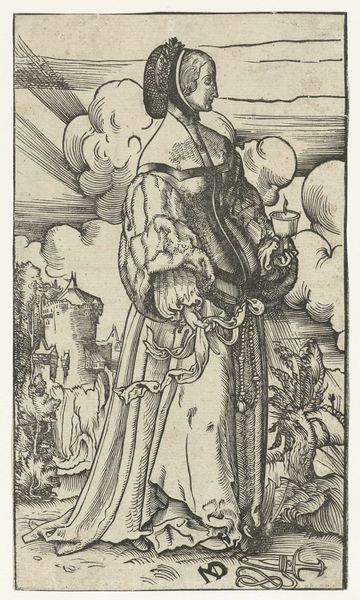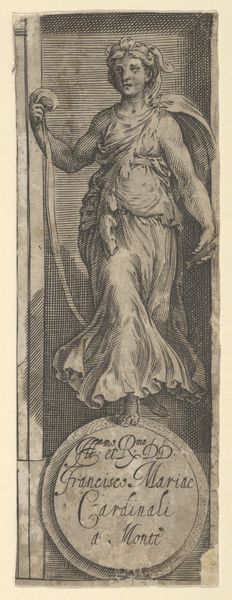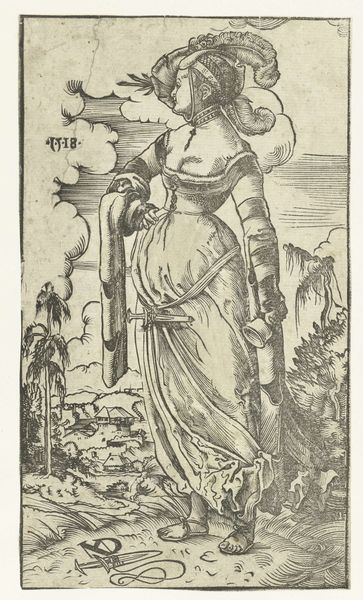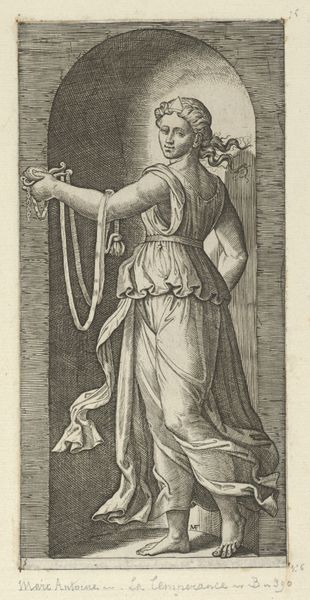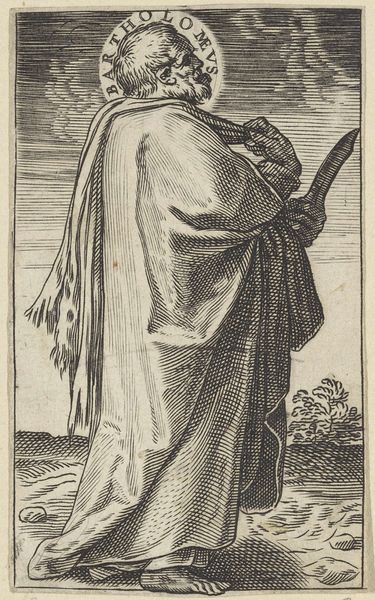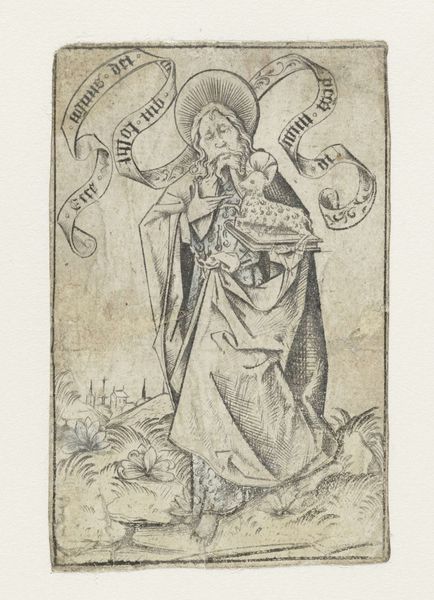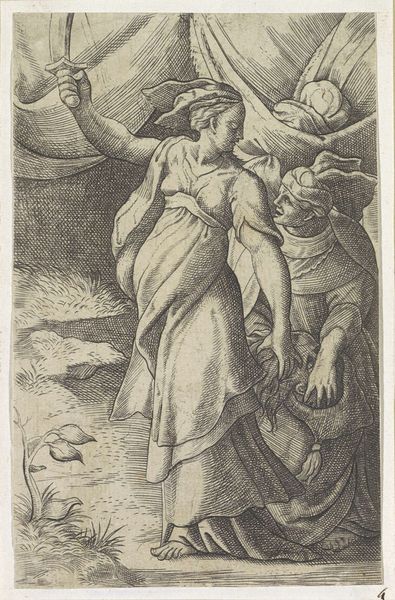
drawing, print, engraving
#
portrait
#
drawing
# print
#
figuration
#
northern-renaissance
#
engraving
Dimensions: sheet: 4 5/8 x 2 7/8 in. (11.7 x 7.3 cm)
Copyright: Public Domain
Curator: This is Lucas van Leyden's "St. Mary Magdalene in the Clouds," an engraving originally created around 1519. It's part of the Metropolitan Museum of Art's collection, a later impression made between 1489 and 1957. The rendering feels simultaneously delicate and firm, quite fitting given van Leyden’s unique skills. Editor: The engraving is striking—almost austere—at first glance, the saint floats on swirling clouds that look surprisingly solid, it strikes a slightly haunting yet dignified tone. There is something vulnerable about her averted gaze. Curator: Exactly! Consider that she is holding the ointment jar that identifies her; it references both her act of anointing Christ and the larger ideas around repentance and acceptance within religious doctrine. The iconography makes direct ties to stories we remember but also reinterprets the saint beyond her relationship to Jesus Christ. Editor: Which is interesting given that the work originates within a patriarchal religious structure! And you know, speaking of the container, the level of detail van Leyden achieves with such a humble medium--that’s just masterful. You also must acknowledge this representation of divine ascension taking the female form as its focus. It pushes against many preconceived notions in the Northern Renaissance's socio-cultural reality. Curator: Absolutely. Her representation is also particularly distinct as an almost lone figure against a simple and bare ground—with some exceptions for the heavenly pillow she sits on, that is. While not hyperrealistic, the flowing fabrics of her garments, the billowing locks escaping her head covering, give her body a form of realism against the imagined setting. It becomes a way for her image to resonate over time. Editor: Right, van Leyden situates her in this ambiguous space of faith. But this image might subtly be advocating for female power, or at least compassion. The Northern Renaissance saw increasing focus and interest in the interior lives of women—particularly concerning feminine faith—and Leyden gives us that vulnerability coupled with undeniable fortitude. Curator: Yes, through Mary Magdalene's character, Leyden gives her a lasting impression within this medium that moves beyond any singular point in time, which for me solidifies her legacy. Editor: Absolutely, even in a later impression like this one. She persists. This is where visual analysis truly resonates with modern concerns regarding identity.
Comments
No comments
Be the first to comment and join the conversation on the ultimate creative platform.
